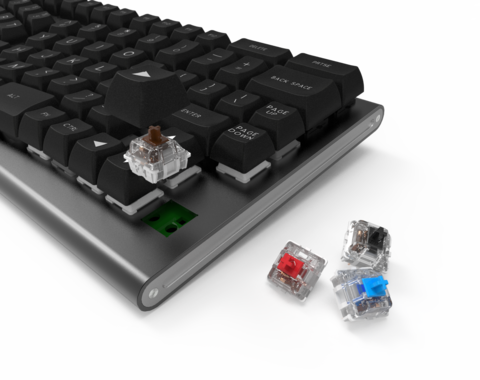
Are Mechanical Keyboards Ergonomic
Are Mechanical Keyboards Ergonomic?
As we mentioned in Ergonomic vs mechanical keyboards, the difference between a mechanical keyboard and an ergonomic keyboard lies in their key layout. Thus, is a normal mechanical keyboard ergonomic? Why do we choose to use ergonomic layout keyboards?
One of the main reasons why we have abandoned the traditional mechanical keyboard is the pain it causes - CTS. We probably didn't feel any discomfort when we started using traditional mechanical keyboards. However, as time and workload increase, we can hardly leave the keyboard, and the seeds of pain are planted in our bodies.
1. Natural wristangle VS Bent wrist
If you don't extend your wrists naturally, notonly will your wrists be damaged, but your chest and your arms won't be able tostretch naturally. As you straighten your wrist, your arms and shoulders will follow suit, forming aproper typing posture. If it's an overbent wrist, you're going to have an over bent shoulder, you're going to have an over bent elbow, you're going to havean overbent shoulder, you're going to have an overbent elbow, and over a long period of time, you're going to have an irremediable strain on those joints. This is what we often call "RSI."
2. Limited finger travel VS Fatiguing finger travel
When we use the keyboard, our right hand tends to bear morestress. One reason is that our most common function keys are on our rightside, like back space, Delete, and Enter. When we reach these buttons, theright hand needs to twist our wrist, if you have to press these buttonshundreds of times a day, then this means you have to twist your wrist hundredsof times, which is undoubtedly a very terrible thing.
To improve this, x-bows has four additional keys in the middle:Backspace, Enter and Ctrl,Shift.If you don't use Ctrl/Shift very often, you can change these keys via the QMKwebsite. So you don't have to put as much pressureon your right hand.
3. Natural finger travel VS Asymmetric finger travel
An ergonomic keyboard design needs to meet the physiologicalstructure characteristics of the Angle between each fingers . Each finger ofthe user can touch the key in the natural state of extension and flexion,taking into account the comfort and extensibility of each finger.
We cantake the design of X-bows as an example. The keys in column A of the keyboardmove down and are not in line with the keys in the same row. This design is dueto the fact that human thumbs are significantly shorter than other fingers, andnaturally the position of the little fingertips will be half or one keyposition lower. This makes it easier for us to reach the buttons we needwithout having to wiggle our wrists too much.











